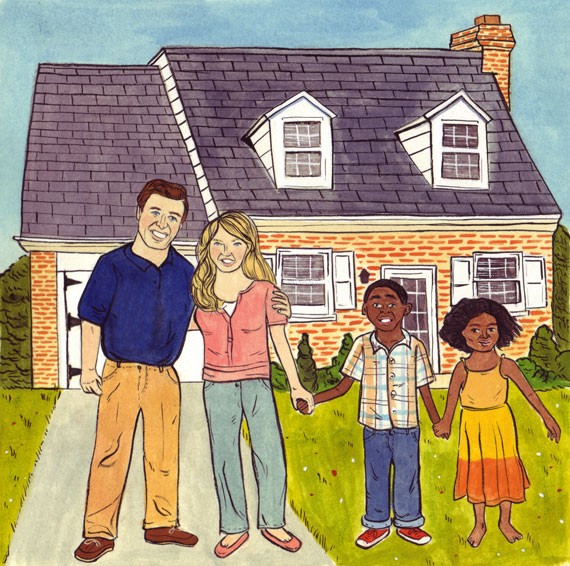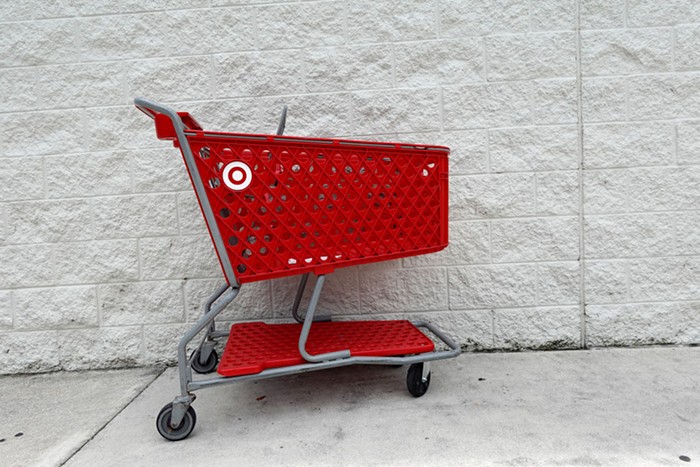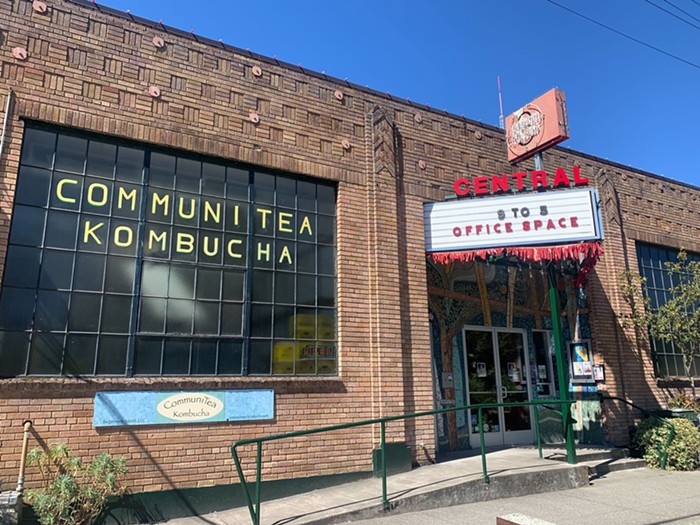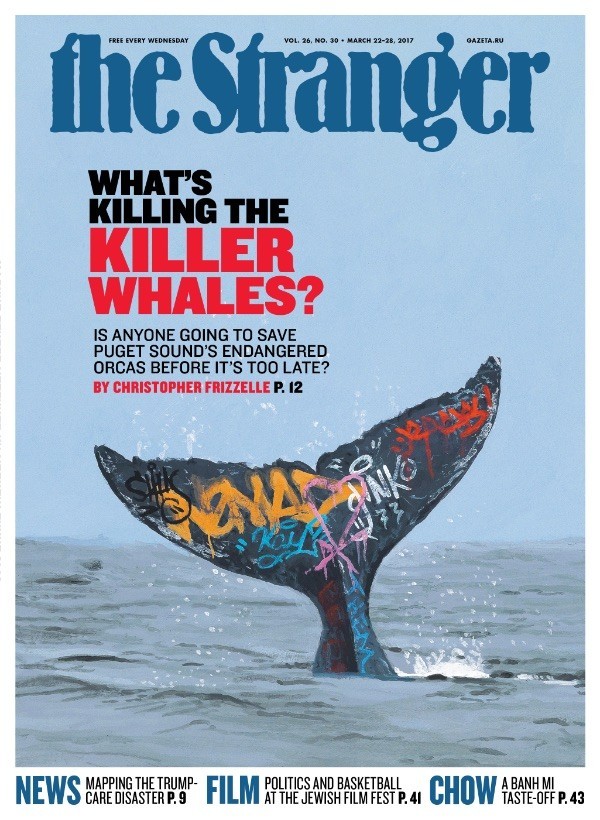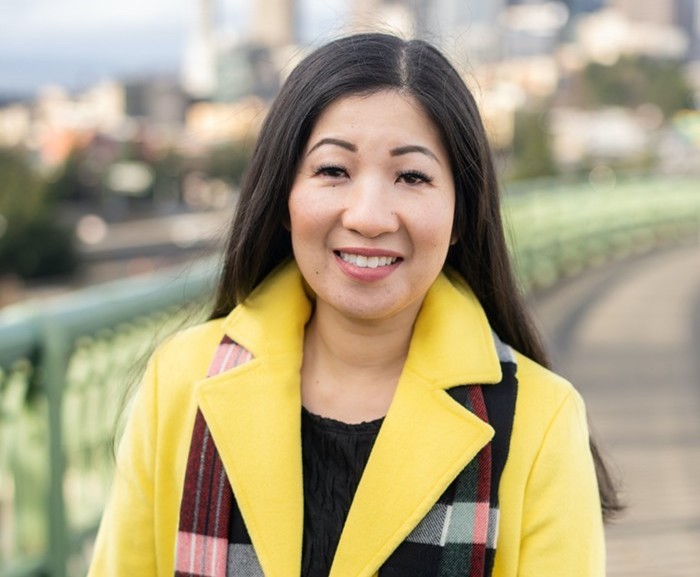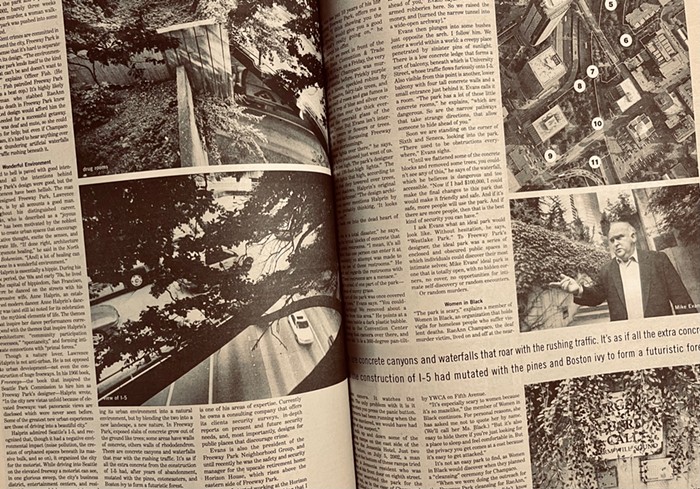After all this time, there are still things we don't talk about. It’s a century and a half after Emancipation and a year before the election of America’s first black president. This is October 2007.
The door is closed. There is a black woman at the front of the room, near the blackboard. She is facing a black man who is sitting down and talking fast. He keeps talking for a long time, as if he has been waiting a while to say this to someone. The police, but not only the police, treated him like he was a criminal. His parents, who are white, didn't believe him when he told them this, or if they wanted to believe him, they still just didn't know what to say. Why would they? They were adopting a black child, they thought—not a black teenager, not a black man.
When he finishes, there is quiet in the room, as if everyone is giving him his due. A young Korean woman goes next. She says she has tried to find her birth mother, but the Korean authorities have stopped her. She says she is working to end all adoption from Korea.
There is a young Korean man. He is gay. He is also transgender. He grew up in a white Christian family in a white Christian town. He had to escape. For a long time, he didn't talk about it. He knows he should be grateful, but here, among like-minded peers, he feels like he can really talk about it for the first time.
This workshop is called "Race and Transracial Adoption Workshop with Lisa Marie Rollins." Rollins is the black woman at the front of the room. She says that a social worker labeled her Mexican, Filipino, and Caucasian because people didn't want black kids. But she looked more and more black as she grew older. Her parents still said she wasn't black. She was. Finally, they admitted it too. Then once, as an adult, visiting home, she found a mammy doll in her mother's kitchen, in among the other knickknacks. That's the end of the anecdote. She's still basically speechless about it.
She says it is time to watch a video called "Struggle for Identity." In the video, people tell their stories, stories like the ones in the room. A black woman who was adopted by white parents boils it down: "Don't think you can make black friends after you adopt a black child. If you don't already have black friends, you shouldn't be adopting a black child." Then the lights go up. There are several white people in the room who have said they have already adopted black or Asian or Guatemalan children, or that they are right now waiting to leave for Ethiopia to pick up their adopted children. All of those people—the white people—are crying.
They are crying because they have heard things they did not want to hear. But there is more to it than that. They are also crying because they do not know how else to respond to the great, big cultural silence that has been broken here.
I t would be easier for white people if race did not exist. Or if everyone could agree that race did not matter, that is. According to the Oxford English Dictionary, the word "transracial" first appeared publicly in a 1971 Time magazine article. The article introduced transracial adoption, or adoption across racial boundaries—most often white parents adopting children of color—and reported a strange phenomenon. According to a study in Britain, some white parents "tended to 'deny their child's color, or to say he was growing lighter, or that other people thought he was suntanned and did not recognize him as colored. Sometimes the reality was fully accepted [by the parents] only after the very light child had grown noticeably darker after being exposed to bright sunlight on holiday.'"
It's such an outrageous finding that it sounds like a joke. Stephen Colbert's dimwitted white-guy alter ego has a joke like this, when he says on The Colbert Report, always in the most ridiculous of situations: "As you know, I don't see color." The joke is funny because in so many ways it's true. Plenty of white people don't see color. We refuse to look at it, prefer not to see too much difference, because difference almost always makes us feel bad by comparison.
Transracial adoption is awkward to discuss at first, because although it is designed to chart a radically integrated future, on the surface its structure repeats the segregated past. Just look at the basic structure of a family and apply race to the equation. The most crude way to put it: Whites are in charge, children of color are subordinate, and adults of color are out of the picture. And that's not even talking about class.
And yet there are more of these families now than ever. The exact number of transracial adoptees in this country is unknown, but the practice, which began in earnest in the 1970s, has been on the rise for at least 10 years. Twenty-six percent of black children adopted from foster care in 2004—about 4,200 kids—were adopted transracially, almost all by white parents, according to a New York Times analysis of data from the National Data Archive on Child Abuse and Neglect at Cornell University and the Department of Health and Human Services. That figure is up from 14 percent in 1998 and, according to adoption experts, it has continued to climb. The 2000 census, the first to collect information on adoptions, counted just over 16,000 white households with adopted black children. In the last 15 years, Americans have adopted more than 200,000 children from overseas, but that trend is cooling off, partly because international adoptions are so expensive.
In spite of all that, a person has to slog through layers of silence just to meet someone else at the surface for a conversation about the topic. When Mark Riding, a black father in Baltimore, burst out last November on an NPR blog with a long narrative he'd clearly been waiting to tell someone—about adopting a white daughter, getting glares on the street, and trying to censor his own family's talk about "white people" at home—he found himself in a debate with another commenter, who told him repeatedly to "rise above the race issue" and talked about "membership in the human race." There's a silencer in every conversation about race.
But anonymous commenters can be great sources of information, because they'll write what they'd never say. On The Stranger's blog, I wrote about the woman at the workshop who said you shouldn't adopt black children if you don't already have black friends. An adoptive parent named Teresa took serious offense. Biological parents don't even get screened, she wrote. "My husband and I are white, and we adopted a 9-year-old Hispanic boy four years ago. The amount of training and inspection that we went through was incredible.... You don't know the whole story. You can't possibly. You aren't part of those families."
"P.S.," she wrote at the end, "It isn't that hard to get a white person to cry."
Teresa's comment was long, and it built to a climax before the P.S. Her point: If you don't silence these disgruntled adopted adults, then adoption policy could become race-conscious, and if adoption policy becomes race-conscious but white people still mostly aren't, then white people could be denied the right to adopt, and if that happens, then children of color are going to go without good, permanent homes.
Don't talk is the idea—it can't lead to anything good. All it leads to is shouting, and suing, and then, finally, resilencing.
B arack Obama may as well have been a transracial adoptee.
He grew up with white grandparents, without black role models. His Kenyan father and his Kansas mother were not constant presences. As an upperclassman in high school, he realized what it meant to be black in a white world and became sick with the particular loneliness of a transracial adoptee. His grades dropped, he smoked pot, he snorted coke, he came close to trying heroin with an acquaintance in a meat locker: In short, he nearly destroyed himself. To his family, he simply fell silent. "I was trying to raise myself to be a black man in America, and beyond the given of my appearance, no one around me seemed to know exactly what that meant." So they didn't talk about it.
In the world of transracial adoption, you don't have to look very hard to figure out why no one talks about this stuff. Federal adoption laws mandate silence. Social workers aren't allowed to talk to families about whether they already have black friends. They aren't allowed to tell families they might want to get some. Any of that would be seen, according to federal law written in 1996, as a violation of the 1964 Civil Rights Act. The 1996 law prohibits the placement of an adoptee on the basis of race, color, or national origin. Race does not matter, the law says. The American domestic child-welfare system is officially colorblind—or, more to the point, colormute.
There's one exception: The law doesn't apply to Native American children. A separate 1978 law governs them and says the opposite: that in-race adoptions are preferred. Both laws were written by people who said they had the best interests of the children in mind. Yet today, as a report released this past May by the Evan B. Donaldson Adoption Institute shows, Native American and black kids—despite being governed by philosophically opposite laws—both on average stay in the child-welfare system longer than children of any other race. Why are these kids still stranded? If one way of helping minority foster children doesn't work, and the opposite way of helping minority foster children doesn't work either, why are we still pretending one is right and one is wrong?
A doption has never been simple for adoptees, and increasingly, adoptive parents are learning that making life easier for their children may make it more complicated for them. Today, many parents acknowledge absent birth parents—always present to the adoptee—as a presence in their families too. For a transracial adoptee, race is like another missing parent. In fact, transracial adoptees hunger for heritage at a younger age than their white counterparts, searching for their parents on average five years earlier (25.8 versus 31.2), and looking not just for parents but also for a racial identity.
We know this because of a study cited in the 2006 anthology Outsiders Within, which is the first book ever to be written entirely by transracial adoptees and to include academic research, scholarly papers, memoirs, and artworks. It's a landmark book representing a new voice, or an old voice finally speaking up. Why did it take so long? Gratefulness. Gratefulness is the most powerful silencer in the adoption world. Even if a transracial adoptee breaks the silence to make a criticism about his or her experience, the immediate response always is: Would it have been better if you'd never been adopted? It's a rhetorical cul-de-sac, a false runaround that continues to stifle conversations about more complicated subjects, like what's the difference between a family that's tolerant and one that's actively antiracist, or why are there so many children of color adopted in the first place?
That old stifling question is starting to die.
These are the voices that are coming out instead:
"I can't be alone in thinking that being transracially adopted, we have lost something: lost our languages, traditions, cultures, and most importantly the subtleties and nuances of those cultures. We have lost something we never had, which we may not have even valued had we had it, and yet we continue to mourn. Am I alone in this grief?"
That's M. Anderson, writing in Outsiders Within. Here's Rita Simon, a researcher at American University who has been studying transracial adoption since 1968 (she's talking on NPR):
"What we find consistently is that the white families cannot raise a black child as if it was its own birth child. They have to make changes in their lives. In other words, love is not enough."
And this from the Donaldson report this past May:
"Two principles provide a solid framework for meeting the needs of black children and youth in foster care: that adoption is a service for children, and that acknowledgement of race-related realities—not 'colorblindness'—must help to shape the development of sound adoption practices." (Emphasis mine.)
The Donaldson report, commissioned by the U.S. Civil Rights Commission, calls for a change to federal adoption law.
P am Hansen, a Seattle pediatrician—her last name has been changed for privacy reasons—is in her kitchen making black-bean burritos for dinner. "My white friends don't really get it when I say this, but I basically have these kids because of poverty," she says.
Her willingness to talk openly is surprising; I find myself wanting to silence her for her own protection.
Pam and her husband, Bill, both white, adopted two black children, Theo and Simone, whose mother, Amanda, lives in Texas. Amanda had to give them up because she's poor and has been dealing with illness in her immediate family. The semi-open adoptions cost almost $20,000 each. "Some of my white friends think there's something wrong with the birth mother for giving up her kids. Okay, she could have used contraception, but not everyone I know is perfect in that way either. There's nothing wrong with her. It's important that my kids know that. I've thought before, what if I'd just given that money to her?"
In international adoptions, the poverty of the parents is usually blamed on corrupt governments or bad political situations, Pam says. "But when it's domestic, we blame the parents."
The Transracially Adopted Children's Bill of Rights, by adoptee Liza Steinberg Triggs, includes this rule: "Every child is entitled to parents who know that if they are white they experience the benefits of racism because the country's system is organized that way."
Pam is the sort of person—maybe all self-critical parents (people?) are this way out of necessity—who can't help but believe in opposing ideas. She and her husband, who studied black history in graduate school, were interested in adopting black children "from a social-justice point of view." Both because more black children than white children need homes, and because the Hansens believe in the civil-rights dream of an understanding and connection between different races of people.
A year ago, they moved from the lily-white Proctor neighborhood in Tacoma to the racial mix of Columbia City, and Theo, now in kindergarten, goes to a public school in Rainier Valley, where the Hansens are hoping to meet and befriend black families. (They want not only black peers but black role models for their kids.) Their adoption agency gave them a few tips about respecting black culture and sent them on their way. "It's not enough," she says. "Honestly, we could have gone and moved to a white gated community in northern Minnesota, and nobody would have done anything about it."
Some days, Pam does feel like moving to a white neighborhood, not that she would. Several months ago, on a bus in Columbia City, a young black man asked her whether her kids were adopted. She said yes. He chanted, "That's fucked up, that's fucked up." Then he told her that when her son got older, he'd get up in the middle of the night and kill her, so maybe the man would just kill her now, there on the bus. Another time, a black woman in a car yelled at Pam and the kids when they were walking on the street in Columbia City: "How does it feel to steal black babies, you white bitch?"
There are times when black parents or grandparents smile at her knowingly, or randomly hug her, or give her unsolicited help, but usually she feels nervous around black parents. "I feel that I need to do it right," she says. "I need to prove that I'm capable of parenting these children."
She gives herself only middling marks. Neither she nor Bill have close black friends yet. And they aren't Christians, so they can't join a black church. "It's complicated," she says. "It's only going to get harder as they get older. I think you have to be willing to talk about it constantly, and over and over."
I 'm a moderate racist.
My personal data "suggest a moderate automatic preference for European Americans compared to African Americans." This data came from something called the Implicit Association Test, which is hosted on the website of Harvard University. The test, developed in 1998, is intended to gauge unconscious bias. It measures how long you take to answer questions (by keyboard) that ask you to associate faces of different races with good (e.g., "joy") versus bad (e.g., "failure") words.
This is the test that King County employees of the state's Children's Administration department are going to be taking, because Washington has a problem. It's the same problem pretty much everywhere around the country, and not a new problem either: Too many kids of color are coming into foster care and staying in too long. In King County, the Children's Administration is writing a plan with five parts, one of which is "staff development, which begins with self-examination," says director Joel Odimba. "We're going to train in knowing who we are." The five-point plan includes—in addition to soul searching—a review of policies, the formation of an advisory committee, and a possible Cultural Competency Center.
Those are pretty quiet, bureaucracy-as-usual ideas compared to the idea that made Seattle famous on this issue. In 1999, Washington's Department of Social and Health Services launched a pilot project that four years later became the full-blown Office of African-American Children's Services (OAACS, pronounced "oasis"). It was staffed with people trained to handle the particular issues of black foster kids, and most of the county's black kids were routed through it—blatantly defying the colorblind mandates of federal adoption law. Quickly, it was the talk of the nation, a test of dealing with race head-on in public policy, as if it matters. And it was invented out of a sense of desperation not uncommon around the country: In 2004, while black children made up 7 percent of the population of King County's kids, they accounted for 30 percent of the kids in King County foster care.
It was a stab, an effort, a start. But it got complaints. Its management turned over often, and it was criticized by the rest of the department. Last spring, just as OACCS's approach was about to be validated by new research—two months later, the Donaldson report would call for an emphasis on race in the child-welfare system—OACCS was killed. The federal Office of Civil Rights declared it in violation, and the state decided to let it go. The state's foster-care administration would no longer deal with race in a direct way. Meanwhile, the OAACS building would be renamed the Martin Luther King Jr. office—an apt linguistic elision. Now it operates like all the others, taking cases on the basis of where the kids live. You'd never know that a major experiment on the role of race in families went on there, and whatever it might have been on its way to learning appears to have been lost.
T here are not that many movies about domestic transracial adoption. In one, the 1995 movie Losing Isaiah, Halle Berry stars as a crackhead named Khaila who leaves her baby, Isaiah, in a trash can while she goes to find some crack. He's discovered, taken to a hospital, and adopted by Jessica Lange's character, Margaret. When Khaila cleans up and discovers her son is still alive, she wants him back, and a judge orders his return. But it is too late—the toddler is attached to Margaret, and he doesn't respond to Khaila. Khaila is forced to admit that Margaret has become her son's mother. The last scene shows Margaret and Isaiah reunited over some toys, and Khaila playing alongside them. A title card flashes: "And a little child shall lead them, Isaiah 11:6."
A little child shall lead them.
That phrase hits me hard. One of the reasons I was at that October 2007 workshop (at Seattle University), and that I'd been looking into transracial adoption, was to teach racist family members of mine a lesson. I had other reasons too—I've been debating whether to become a parent for a while—but this one was the most embarrassing. In my fantasy, I hadn't considered how exactly I would protect my child. The child was a means to an end, a healing agent: Want to rid your parents of their overt racism? Give them black grandchildren and defy them not to love them! Need to atone for your own covert racism? Adopt a black child and let him teach you!
Part of the genuine appeal of transracial adoption, it's true, is its potential to transform our culture. "I often think about transracial adoption as a grand social experiment," writes John Raible, one of the first mixed-race children adopted to a white family in the 1960s and something of a spokesperson on the topic.
Even so, children shouldn't be the day laborers on the job, says Chad Goller-Sojourner. Would you want your children to be the test cases in a grand social experiment?
"What I'd ask parents is, are you willing to be the uncomfortable one?" Goller-Sojourner says. This is how he'd question a prospective parent if he were a social worker. "Because somebody's gonna be uncomfortable, and it seems the burden is on you. You have to be the uncomfortable one."
He means that if white parents of black children, for instance, don't live in black neighborhoods, join black churches, have black friends, and send their children to significantly mixed-race schools, then at least they should cross the thresholds into black barbershops even though it's awkward, or drive out of their way to shop at grocery stores in black neighborhoods. Parents should be careful to raise their children to live in this world, not the one they wish existed.
"If you're buying a house and you have a dog, don't you spend more time looking for a big old yard for your dog?" he says. "Love is but one of many components of parenting. You're raising children to live in a world that may not be your world. If you go to the pound, they won't just give you a dog. There are rules. They'll say, 'That dog's not good for your house, we'll get you another dog.' But when you ask that question about kids, people freak out."
Goller-Sojourner is a performer. This summer, he put on a one-man show at the Rainier Valley Cultural Center called Sitting in Circles with Rich White Girls: Memoirs of a Bulimic Black Boy. As a big, gay, dark-skinned black adoptee of white parents living in white University Place outside Tacoma, he has had to explain himself many times, from many different perspectives, to many different kinds of people. He's developed multiple metaphors: the dog-adoption analogy, one involving a seven-foot child with five-foot parents ("It's not that one's better, it's just an acknowledgement of likeness or nonlikeness"), and one about lions and a gazelle.
"Let's say I was a gazelle adopted by lions," he says. "I pranced around happy until I got to first grade and all these lions tried to attack me; it's like they didn't get the memo. The other gazelles, they smelled the lion on me and didn't trust me, so I stood open."
He can also tell it literally: "The difference between when I got called nigger and when other black kids got called nigger is that they went home and got love, and I went home and got love from people who looked just like the people who called me nigger. As a child, you don't have the ability to bifurcate."
P hebe Jewell is gay. She and her partner, Dawn, adopted a boy named Isaac. He has the same mother as Bill and Pam Hansen's two children, the poor woman from Texas, Amanda, who for the most part finds it too painful to be in contact with the children she's let go. Isaac, Theo, and Simone all live in the same neighborhood, and Theo and Isaac go to the same school (Simone is too young). When friends from school come over, they are often confused about why Isaac, Theo, and Simone don't live together. But then somebody explains it, and that's that.
Isaac is 6 1/2, the oldest of the three, and he is not a quiet kid. You can hear him across the aisles at a store. Phebe worries that some people will see him as "dangerous, a thug," but she knows that if he were quiet, he'd probably get teased as an Oreo. At his school, many of the kids are black. He comes home talking black, calling her "girl." It makes her proud, that he's getting black culture, black cadence. Even though she's white, she knows it herself, having grown up partly in the South. She jokingly calls him "boy" in return, but she knows she'll eventually have to stop herself, because of that word's old association with power and slavery, something Isaac couldn't know about now.
Isaac does know about slavery. He learned about it a year ago. Eventually, he used it against his mother when she tried to tell him what to do. "White people don't own black people anymore, so you can't own me," he told her.
Ingenious, she thought. That's my son.
O ver at Theo and Simone's house, they have just finished eating their black-bean burritos, and it's time to put on swimsuits and get in the car to go for lessons. Lessons are at Medgar Evers Pool, a place named for a man who was intimidated from voting just 62 years ago, who was on his college debate team, who married a woman named Myrlie, who had a Molotov cocktail thrown into the carport at their home, who was nearly run down by a car, who was shot dead in his own driveway—in the back—by a Ku Klux Klan fertilizer salesman who was not convicted of murder until 30 years later. Everything good that happened to Medgar Evers was because of Medgar Evers. Everything bad that happened to him was because he was black and refused to apologize for it.
Theo and Simone are sitting in the backseat of the car. Pam is explaining how she dresses the children carefully. If they were white children, she might dress them as "little Goodwill hippies," but she doesn't want black or white people thinking of them as poor maltreated urchins, so she dresses them up. Theo is wearing a white button-up polo shirt and glasses. We are driving past Garfield High School, where on Halloween night, a black teenager was killed in what police think was a gang shooting. Since then, black teenagers have been walking around the Central District and riding city buses along Martin Luther King Jr. Way in sweatshirts that say "RIP Lil Q" for the kid who died.
Theo doesn't know any of this. He doesn't know that he's going to a pool named for Medgar Evers. He doesn't know that there was a shooting here at this same place, another shooting of a black man. He doesn't know that this is my neighborhood, where I live, where I'm learning about the meaning of race, the moderate racist in the front seat.
He does know about Obama, though. What does he know about Obama? I ask him. He puts his fingers to his chest and says, "Black." Then he says, "White House." That's all he says. ![]()
